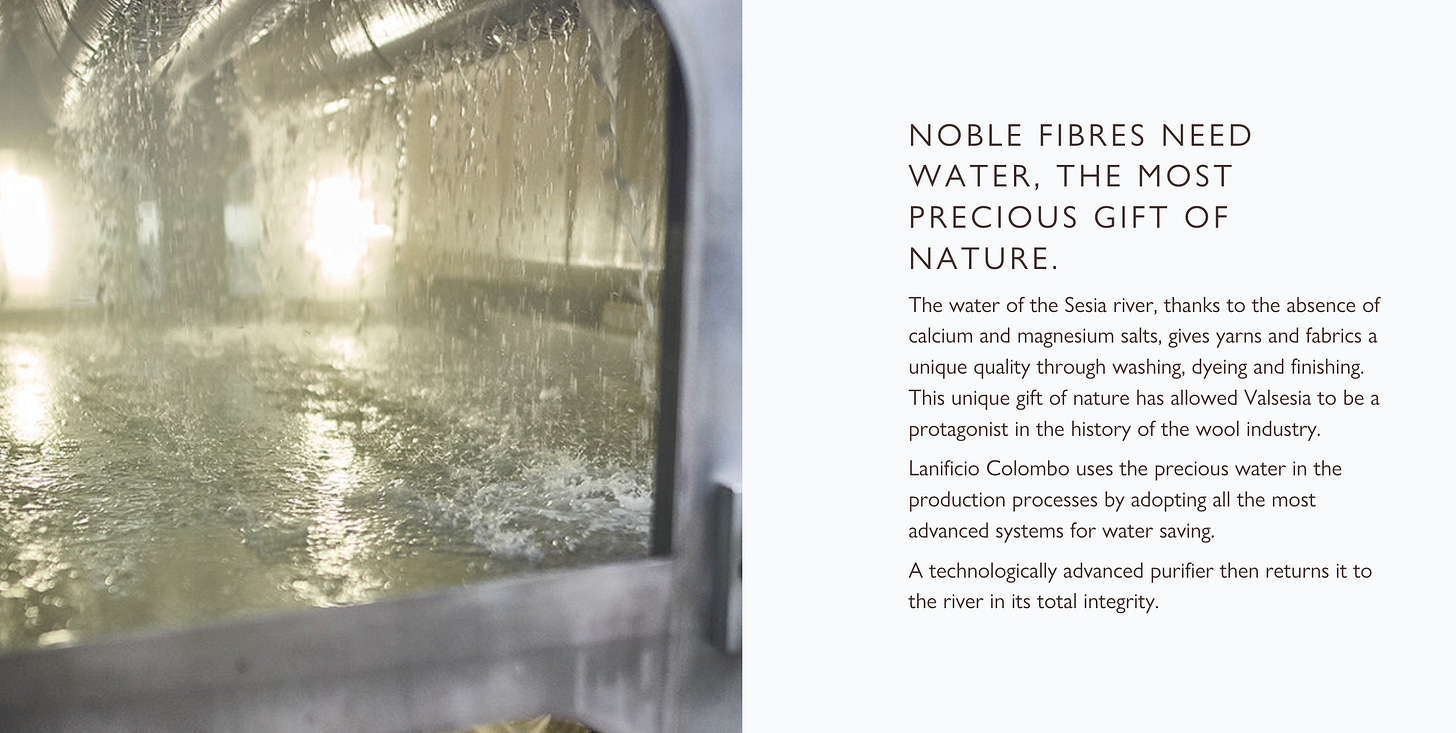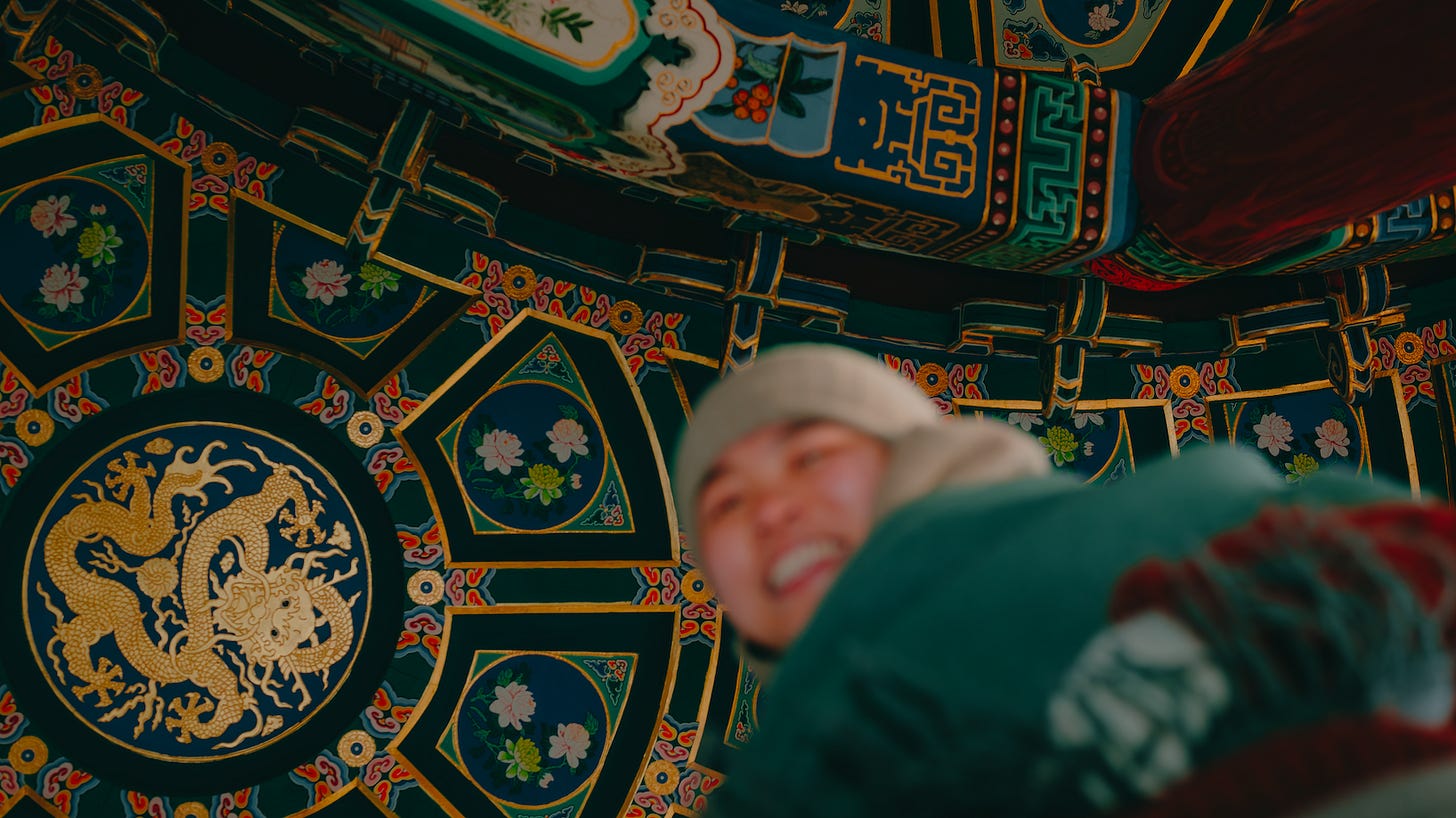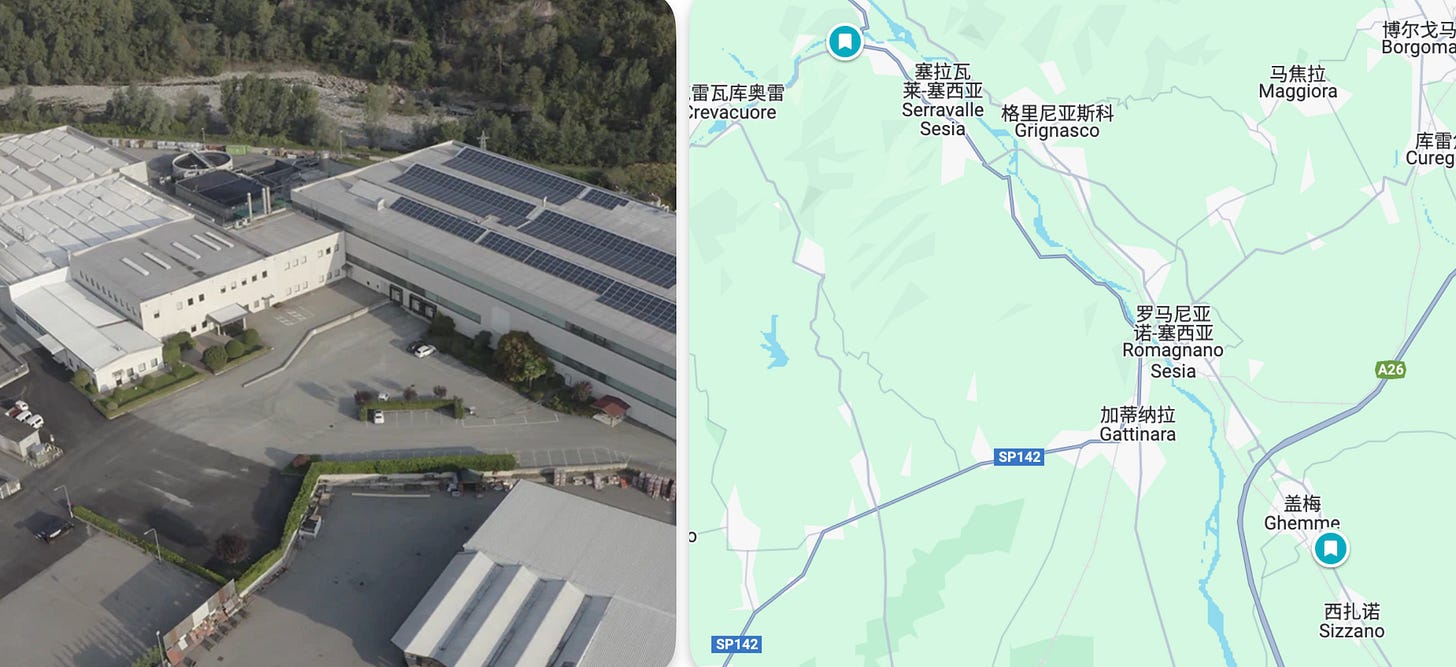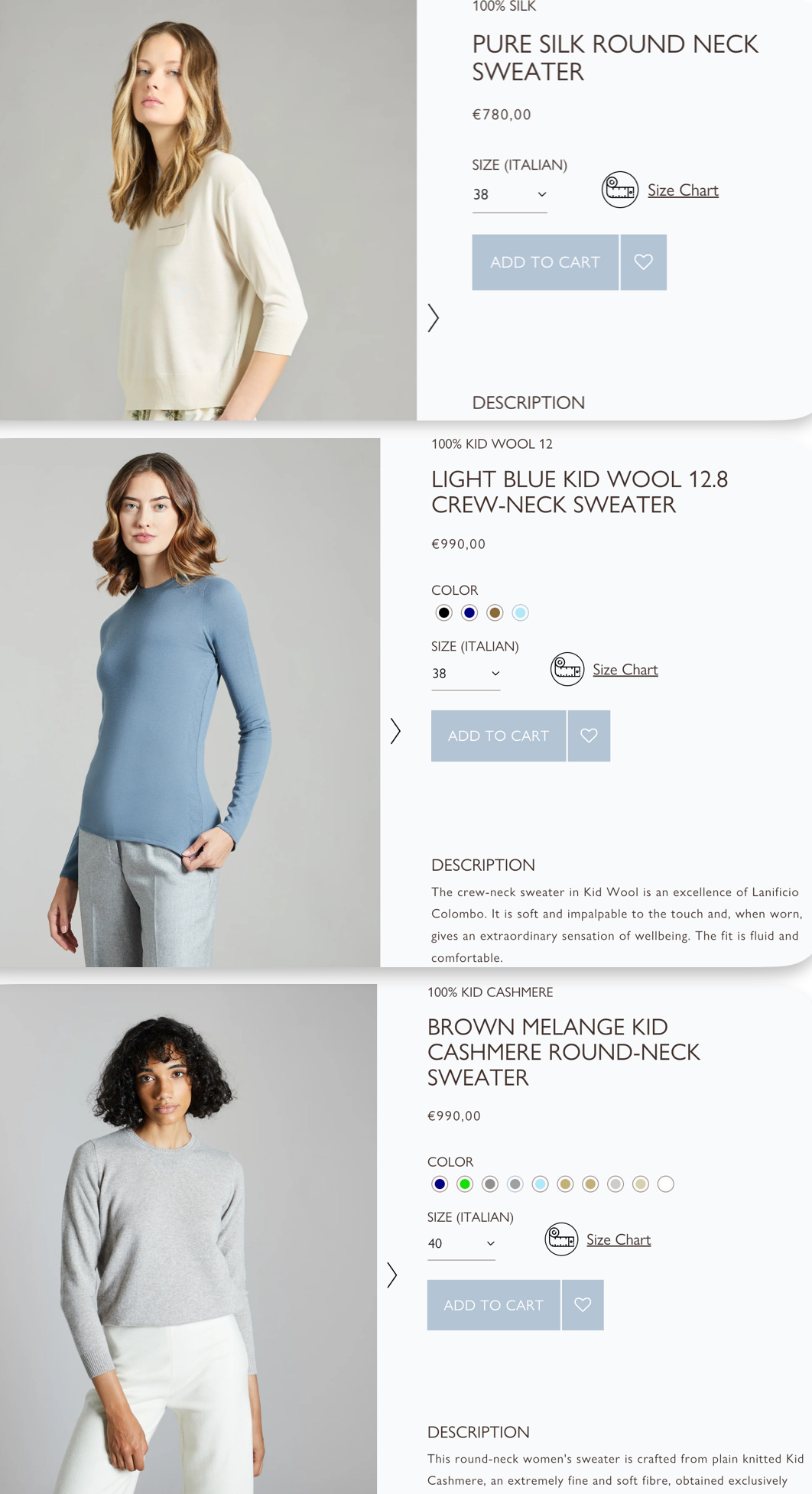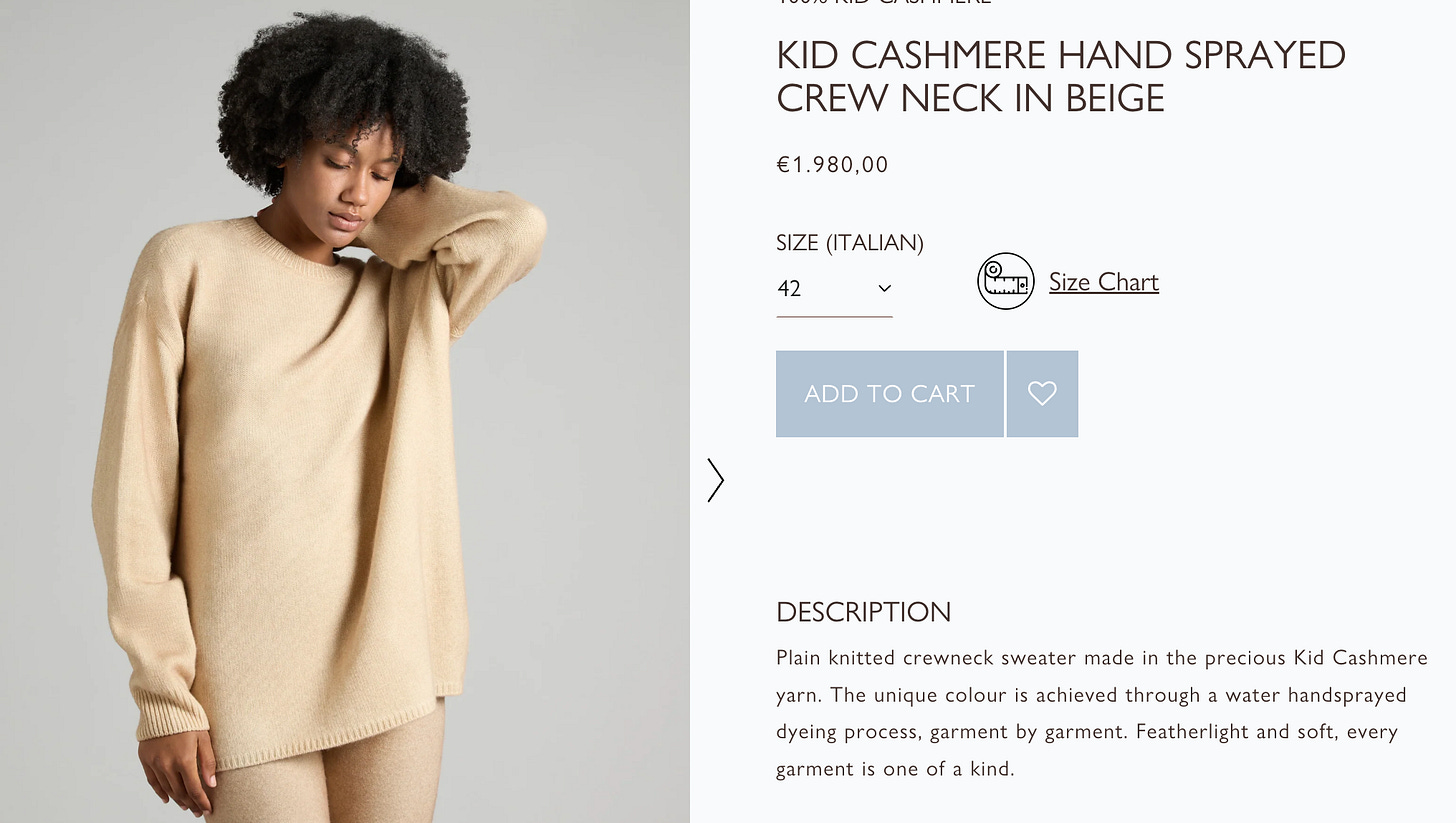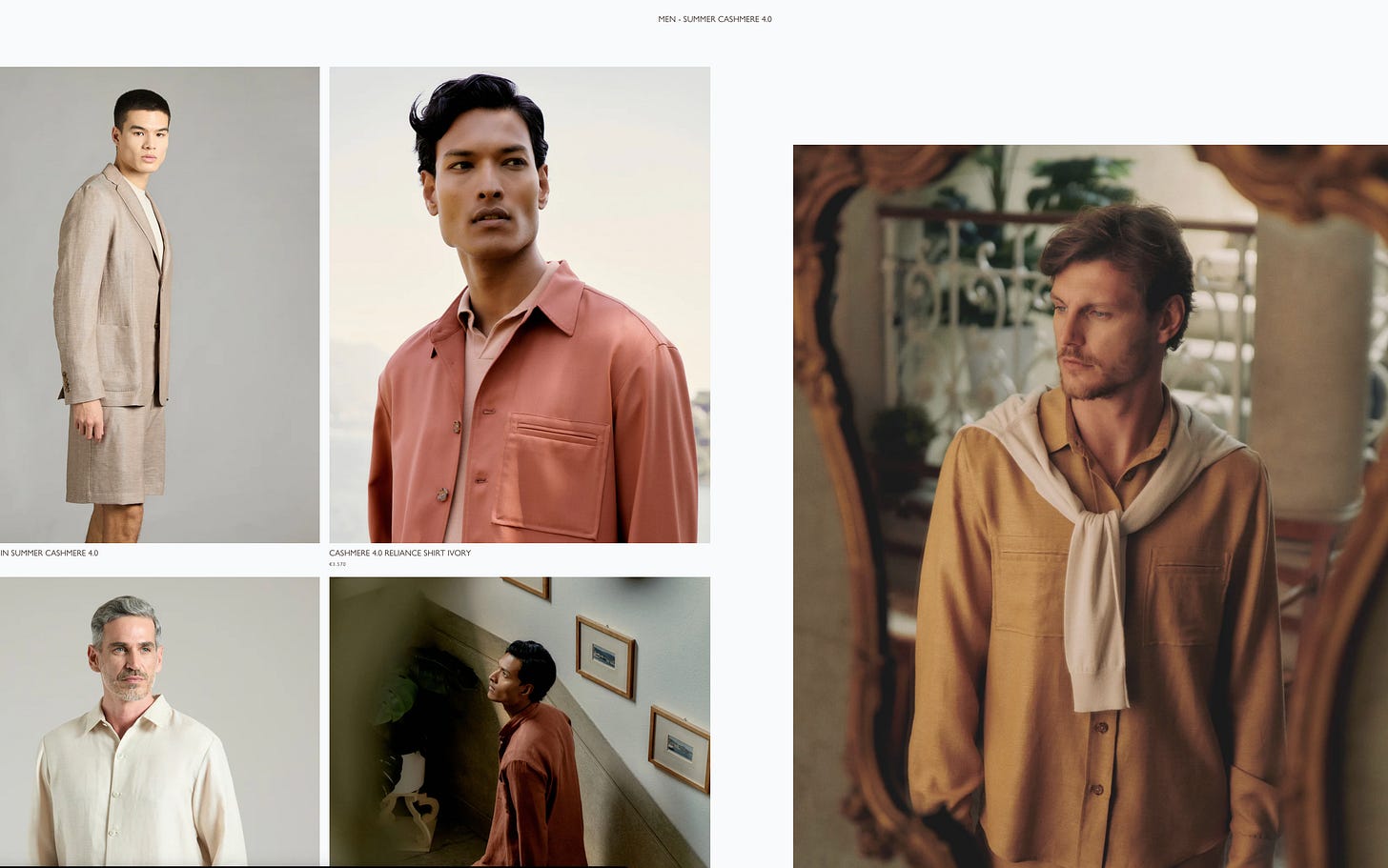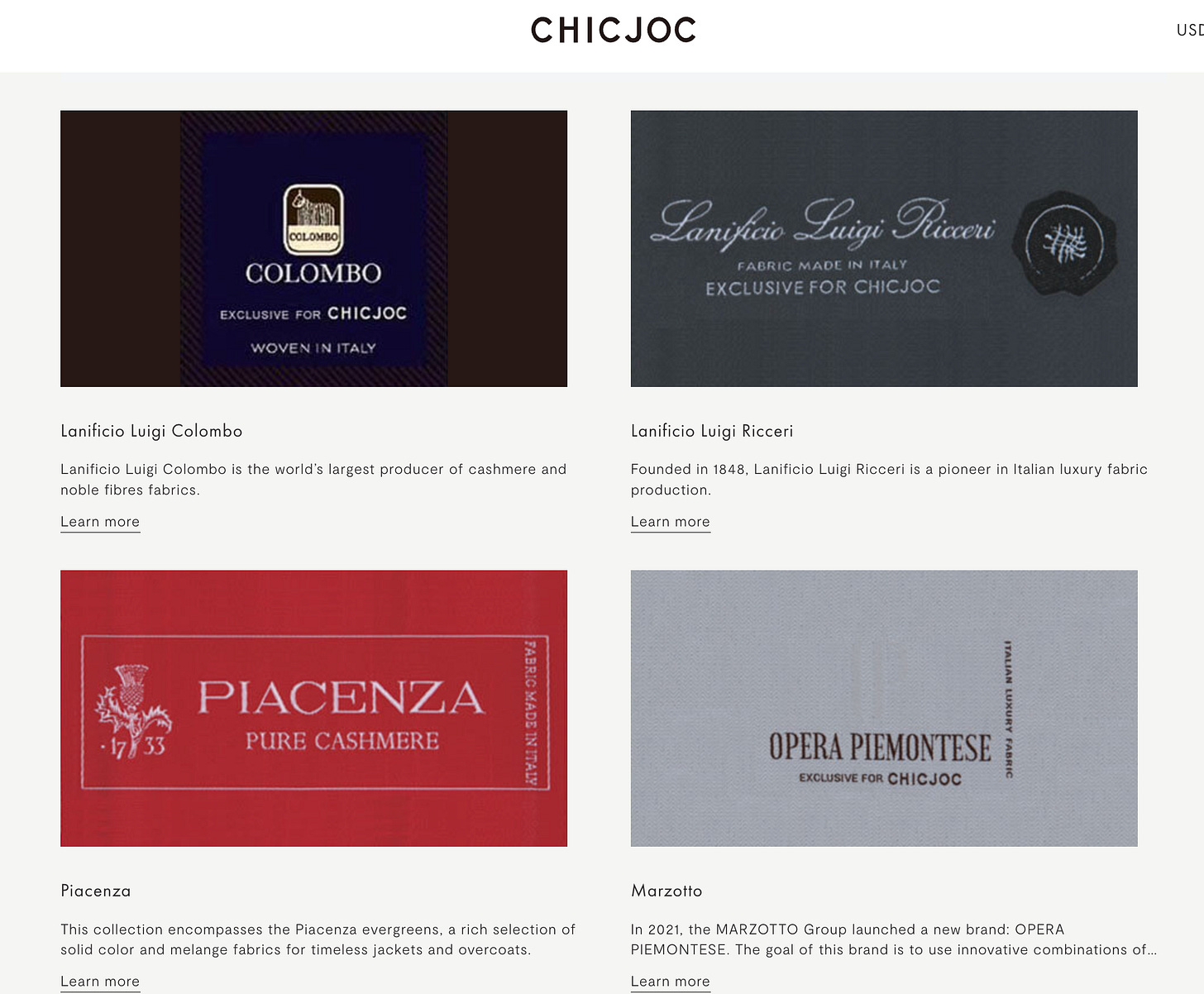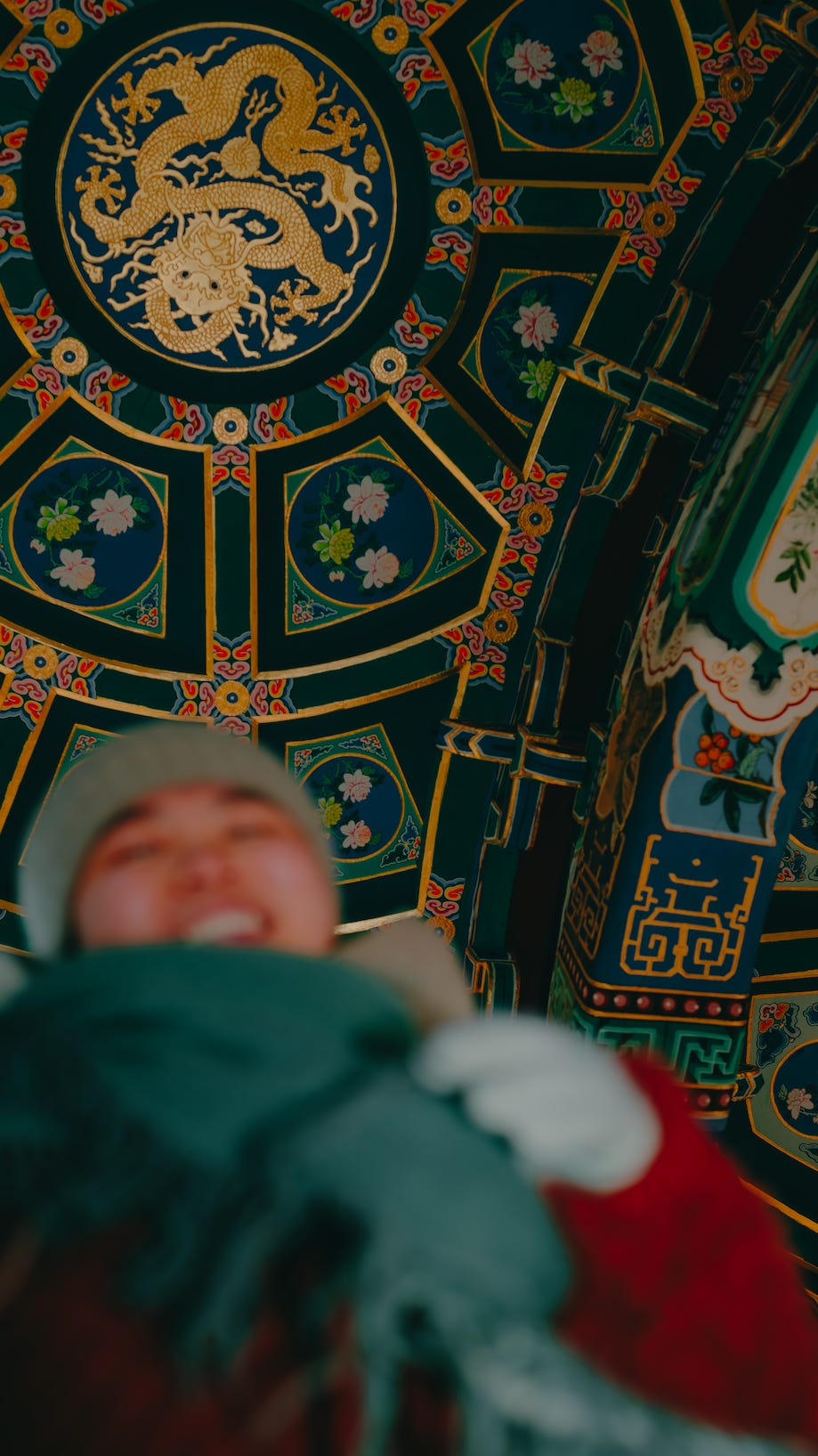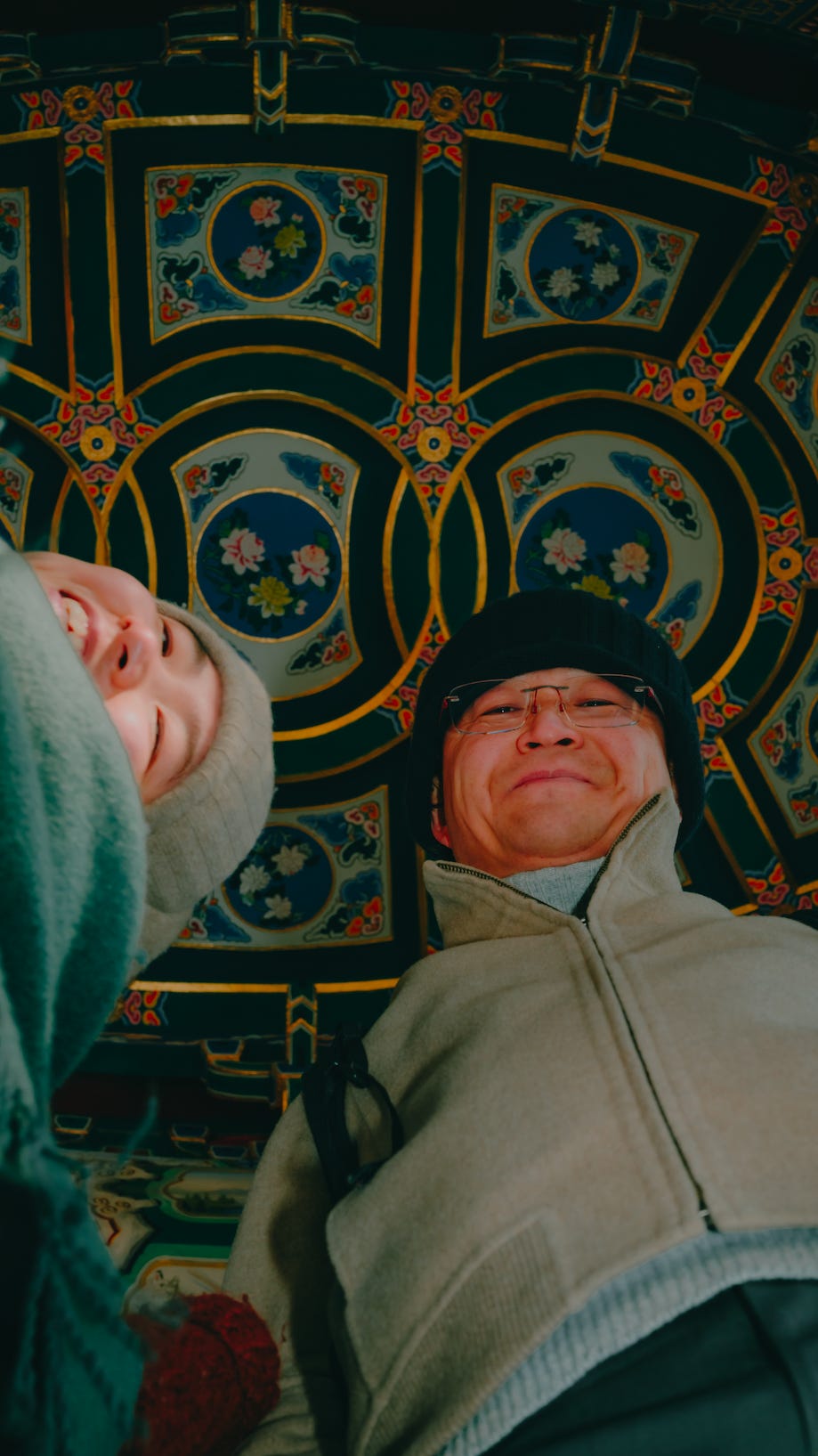Lanificio Luigi Colombo as a top-tier cashmere fabric manufacturer alongside Loro Piana and Cariaggi, provides cashmere fabrics for luxury brands such as Hermes, Chanel, Dior, Celine, and Louis Vuitton. Like Loro Piana and Agnona it originated in Borgosesia, located in the upper left corner of the map below, some distance from Biella, all situated at the foot of mountains with abundant water resources.
Lanificio Colombo's official website directly explains the importance of the Sesia River's water source for high-quality fibers, noting that the water must have low calcium and magnesium mineral content.
Recently, there has been frequent discussion about the impact of water resources on the textile industry. Looking at China, only the southwestern region has clear snow water from high mountains. In the Ming Dynasty, Lanzhou's cashmere was quite famous, as the clean water source made cashmere cleaning easier. Why were there few records of cashmere before the Tang Dynasty? Possibly because that period was in a warm climate cycle, and China traditionally preferred cooling fabrics like silk and hemp. From the Song Dynasty, as the climate cooled, wealthy families in the Ming and Qing dynasties began wearing cashmere.
Looking at this image reminds me of a question: Italian and British textile industries have histories of over a hundred or even two hundred years, which seems long. But from a millennial perspective, which industry can survive a thousand years of history? Families might manage (now I understand the severity of the "execution of nine generations"). From this perspective, a company surviving over a hundred years doesn't seem that difficult.
Anyway, back to Lanificio Luigi Colombo. In China, it's represented by a Shenzhen company called Redstone (Hongju), under the brand name Shanrong (Hongju also owns GIADA and YI, two brands commonly seen in shopping malls). They recognize Colombo's status as a fabric supplier, though the details of their cooperation are unclear. Many of Colombo's garments in China are "Made in China" and are China-specific models, with some fabric differences, although some are still produced in Italy.
The Italian store garments are still "Made in Italy" and operated by the Colombo family. Italy's annual winter sales are a good opportunity to visit the Colombo factory for excellent value.
This article follows the Italian official website's introduction to Lanificio Luigi Colombo. All references to "Colombo" refer to the Italian family-operated Colombo, with clothing based on the Italian official website, all "Made in Italy."
When researching, I found that searching for articles on WeChat using the "hottest articles" filter and searching for "Lanificio Luigi Colombo" or "Lanificio Colombo" returns results about the original brand operated by the Italian family, while searching for just "Colombo" brings up the Shanrong company's version of Colombo.
Google searches should use "Lanificio Colombo"; otherwise, you'll get results for the city of Columbus. The upper right corner of the official website also displays "Lanificio Colombo."
The thistle fruit pictured above is also promoted by Piacenza 1733 , mainly used for creating a brushed finish on fabrics. Lanificio Colombo has registered the thistle-processed ORIGINAL ZIBELIN® as a trademark and used this technology to create distinctive rippled coats. The well-known MaxMara rippled cashmere coats use fabric from Lanificio Colombo. Notably, the thistle is also an important cultural symbol of Scotland, where the cashmere industry was once the most developed. However, I'll research British cashmere separately later; this month, I'm focusing on Italian cashmere.
Lanificio Colombo initially started as a fabric supplier, and fabric remains its core business. Its clothing design and patterns are relatively average, with the brand primarily relying on high-quality fabrics.
For women's clothing, I recommend basic styles like kid cashmere cardigans, cashmere sweaters, and woven capes—items that don't heavily depend on design.
For men's clothing, besides basic cashmere cardigans and hoodies, their jackets are quite good. If you prefer a casual style and aren't too particular about fit, their summer ultra-thin cashmere shirts are worth considering.
On Lanificio Colombo's official website, you'll find a 100% vicuña parka priced at €26,000 and a scarf at €6,000, the most expensive items on the site. Currently, 100% vicuña fabric items are only available in men's clothing, not in women's. The most expensive women's items—cashmere coats, capes, and velvet trench coats—range from €6,000 to €7,000, which for vicuña fabric would only buy a regular scarf.
I've always believed that the simplest way to judge whether a brand belongs to the high-luxury old money style is to see if it offers 100% vicuña fabric items. Even Kiton's annual vicuña fabric allocation is only enough to make a few dozen garments.
For clothing that really tests pattern-making skills, like suits and coats, Lanificio Colombo's performance is disappointing. Even though their rippled coat fabric is excellent, the pattern lines are not commendable—similar to China's 1436, which has good fabric but poor design. Colombo's core ultra-light, wrinkle-resistant summer Cashmere 4.0 patented fabric suffers from design issues, resulting in puffy-looking clothes. Their double-face coats have the same problem, and this fabric no longer has uniqueness, as most brands making cashmere now offer double-faced coats.
01
Lanificio Luigi Colombo was established in 1967. The brand was founded by Luigi Colombo, initially building on his self-developed "double-faced cashmere" technology (1960), before officially establishing the company in Borgosesia in 1967. Since the brand started by developing fabrics, it has continuously emphasized innovation and research in high-end fabrics and the training of artisans.
All Lanificio Colombo fabrics and garments are produced in two factories located in Borgosesia and Gemme.
Lanificio Colombo promotes the following fibers: cashmere, kid cashmere, kid (merino) wool, guanaco, camelhair, and vicuña. When it comes to kid cashmere, the most premium and well-known is Loro Piana's Baby Cashmere, while Cariaggi cashmere isn't as fine and doesn't offer baby or kid cashmere, instead excelling in uniformity and pilling resistance.
Among the Italian fabric manufacturers I've written about, this is the first time I've encountered guanaco and camelhair. Lanificio's Kid wool is the finest Merino wool, reaching 12.8 microns. Speaking of wool, the top-tier fabric manufacturer is Zegna, which offers 12-micron wool, considered top-level among wools and comparable to the finest cashmere and vicuña.
The image below was shared by a Zegna sales associate at Beijing Financial Street. For Zegna, they recommend buying from the black label with gold lettering and the vicuña collection - these two series represent Zegna's premium offerings.
Lanificio Colombo's cashmere, like Cariaggi's, comes from the Hircus goat. I still haven't figured out exactly which breed the Hircus goat is, but it's said that these goats can be found in Xinjiang, Tibet, Inner Mongolia, and Outer Mongolia. They look somewhat similar to Albas goats.
Below, section 02 covers women's clothing and section 03 covers men's clothing, organizing Lanificio Colombo's main products in sequence.
02
The official website of Lanificio Colombo can be misleading. Many fabrics are just regular cashmere, yet they are labeled as "kid cashmere." Be sure to check the description section carefully—if it says "kid cashmere," then it's genuine, but if it only states "cashmere," then it’s regular cashmere. Don't be swayed by the name.
Knitwear
Basic ultra-thin women's base layers are close to €1000, while 100% silk versions are €200 cheaper. The prices for kid cashmere and kid wool are the same.
Although the following images are slightly blurry, you can still see the even and glossy texture of the fabric.
Thicker cashmere cardigans, sweaters, and hoodies are around €2000.
The natural luster is quite evident. This kind of fine and glossy cashmere was previously only seen in Loro Piana. Brunello Cucinelli , Sa Su Phi use Cariaggi , which is not as fine, has less sheen, and focuses more on durability through tight and even weaving.
The best-recommended category from Lanificio Colombo is these basic cashmere cardigans and sweaters.
This heavyweight kid cashmere knit sweater resembles some of Malo heavyweight jacquard pieces, representing a heavy-duty craftsmanship category for the brand. Currently, Lanificio Colombo has only this one knit outerwear cashmere sweater, and its price is several times higher—comparable to a wavy-patterned coat.
It must be cashmere. Although Lanificio Colombo’s silk is decent, it’s not recommended—let alone linen and cotton. Look at the linen, cotton, and silk-blend dresses below; they don’t look good. Lanificio Colombo specializes in cashmere, so stick to that. If you like silk, there are many specialized silk manufacturers. Always buy from the best at what they do.
Surprisingly, even though Lanificio Colombo uses 31% silk in both cases, the cotton and linen version is priced €1000 lower.
These two cashmere dresses are relatively better, especially this one with a special pattern—it’s one of Lanificio Colombo’s main pieces for this spring and summer.
Along with this pleated one, it seems to imitate Agnona ’s Fantasy Stitch and Plissé techniques, which I’ve written about before. However, this Plissé is not as refined as Agnona’s—Plissé craftsmanship is Agnona’s specialty.
Coat & Blazer
For larger pieces, Lanificio Colombo’s kid cashmere coats are recommended, but their blazers are not—they are bulky, lacking proper structure despite the high-quality fabric.
This baby camel wool tartan coat resembles Piacenza 1733, though Piacenza 1733 is more known for baby llama blended with wool or silk.
However, tartan patterns haven’t been popular in the past two decades—people now prefer solid colors and minimalism.
The double-face cashmere coats below have average tailoring. Notice the unnatural wrinkles around the arms and front opening. Also, double-face craftsmanship is no longer exclusive—every brand making cashmere coats can do it.
Look at the messy wrinkles around the arms and neckline. This kind of wide-lapel cashmere coat should take inspiration from Hermès from the Martin Margiela era and its open-front garments.
This double-face piece also lacks structure—you can see how the fabric wrinkles awkwardly as the model walks, rather than forming natural folds.
These two wavy-patterned coats have poor tailoring, but since they feature Lanificio Colombo’s signature wavy fabric, they may be worth considering for fabric enthusiasts—otherwise, it’s a pass.
Notice the bulging fabric at the model’s chest and underarms.
This wavy-patterned one is slightly better—not as puffy.
The only coats I find decent are these two—jackets are slightly more forgiving in fit compared to trench coats and blazers.
This trench coat is 70% cashmere and 23% silk—first time seeing such luxurious material used for a trench. Previously, I thought the best was Akris's 100% silk waterproof parka. Lanificio Colombo’s silk-velvet trench is priced even higher than their cashmere coats, making it their most expensive item.
However, the tailoring is still average.
Since blazers require even better tailoring than coats, even with the finest Lanificio Colombo fabric, their blazers and coats with poor structure won’t appeal to buyers.
Colombo’s patented ultra-light, wrinkle-resistant Cashmere 4.0 fabric still looks puffy due to poor design.
Cape
Lanificio Colombo’s capes are a safe choice, just like their knit cashmere sweaters and cardigans—reliable and well-made. These capes are substantial, unlike most cashmere or quiet luxury brands that rarely produce such high-quality cape fabrics.
I genuinely love these capes. They showcase the luxurious texture of the fabric, and it's the first time I’ve seen such elaborate heavy-fringe designs—even the fringe has a sheen.
03
Lanificio Colombo’s cashmere sweaters, cardigans, and hoodies for both men and women are all worth considering.
Men’s cashmere sweaters are priced similarly to women’s—ultra-thin ones are around €1000, while thicker ones go up to €2000.
Men’s collections often emphasize jackets—Zegna also offers many jackets, whereas women’s jackets are relatively rare. The Lanificio Colombo jackets below still exude a sense of luxury. The brand probably acknowledges its shortcomings in suit tailoring, as the most expensive pieces under Men's Outerwear are these jackets and the trench coat in the top left.
The Summer Cashmere 4.0 fabric below is similar to the women's Cashmere 4.0, focusing on being lightweight and wrinkle-resistant. It is mainly used for shirts and suits. The shirts here work well as casual wear when worn alone, but the formal tailoring is lacking.
Lanificio Colombo's vicuña fabric is currently used exclusively for men's clothing, with only the thickened parka and scarf shown below.
Epilogue
Fabric suppliers like Loro Piana, Cariaggi, and Piacenza 1733 are well-known in China and often leveraged by various Taobao stores and Chinese women’s fashion brands for marketing. Below is a Chicjoc-exclusive fabric (which likely isn’t of high quality). Surprisingly, Chicjoc even dedicates a page to promoting the fabric. Authentic clothing brands I’ve seen only mention fabric suppliers briefly in the description, rather than making a big deal out of it.
Looking at Lanificio Colombo’s different categories, I now understand the complexity of fitting design:
Suits & Coats > Jackets, Trench Coats & Dresses > Capes > Basic Cashmere Sweaters & Cardigans > Scarves
Overall, Lanificio Colombo is undoubtedly top-tier as a fabric manufacturer, but their ready-to-wear capabilities are limited. This is why many fabric suppliers that venture into clothing typically focus on basics or scarves—suits, coats, trench coats, dresses, and jackets require high-level designers and pattern makers.
As for the Chinese version of Colombo—just forget about it. In China, I still prefer brands like BC and Kiton, which balance fabric quality and tailoring.
For men looking to buy vicuña fabrics in China, the best places are Zegna and Loro Piana. Make sure to visit flagship stores—small boutiques don’t carry these high-end pieces.
Why don’t I recommend vicuña for women? Because at that price point, women can buy fur instead, and fur on men still feels a bit out of place.
WeChat: pamperherself






